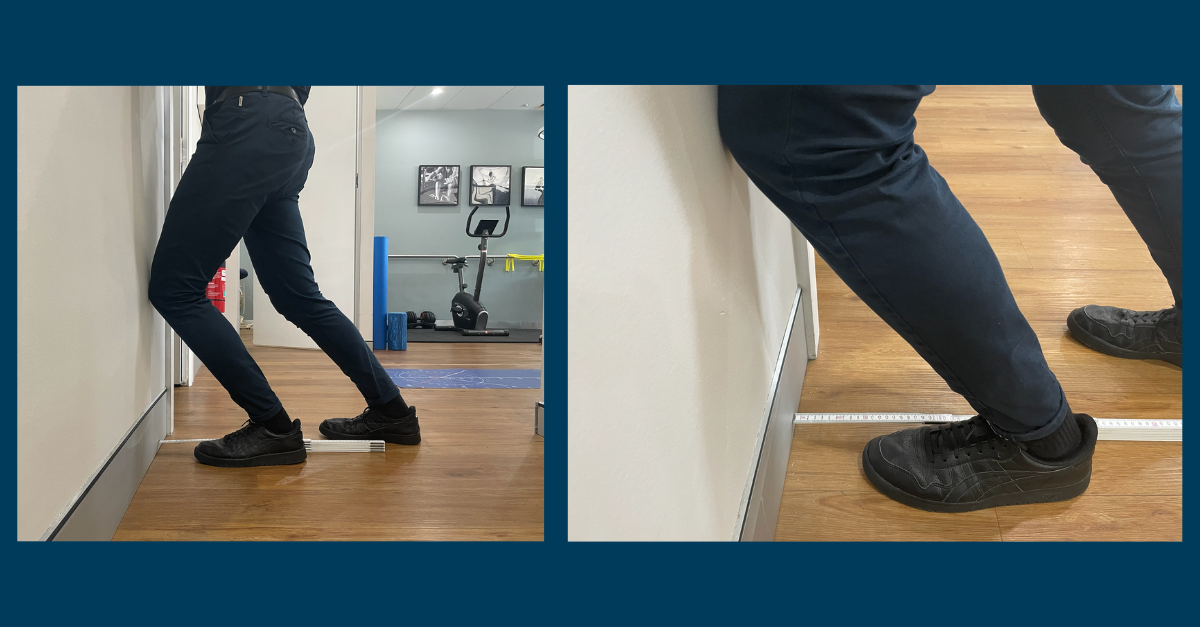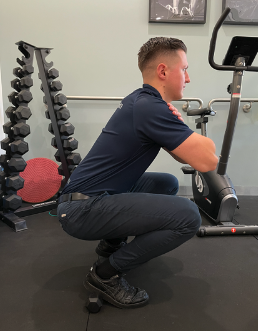Anterior knee pain with barbell squats
Sunday, February 25, 2024
Where is the pain coming from?
The most likely cause would be patellofemoral joint (knee-cap joint) pain. This is usually a diffuse pain around the front of the knee. Other sources of pain would be quadriceps tendinopathy, which is pain from the quadriceps tendon and is usually a localized pain above the patella, and patella tendinopathy, which is pain from the patella tendon and is usually a localised pain below the patella.
Why is it hurting?
The reason why pain can occur can be from a myriad of factors such as overload/overtraining, age, previous injury, low experience, poor sleep hygiene, mobility, and poor recovery. Often it tends to be a combination of factors, or in some cases it can just be because that’s life! To keep things from getting too complicated, we will discuss probably the most common cause which is overload/overtraining and touch on mobility.
All the tissues in our body have a load capacity that they can tolerate before the tissue will be overloaded and potentially be injured or become painful. This often occurs when your activity levels increase faster than your tissue capacity adapts from that activity. For example, you might currently be doing 100kg squats in the gym, and you have a tissue capacity of 110kg. You want to progress from 100kg, so you try squatting 120kg but during or after that session you notice pain around the front of your knee. This may have been due to exceeding the current tissue capacity of 110kg. This is a very basic example of how this may occur, and your physiotherapist is the best person to speak to about your programming and if it may have led to overload/overtraining.
What can we do to help?
Relative rest and gradual progression of load
Basically, we need to settle things down and then build things back up and you can achieve this through relative rest and gradual progression of load. Once you are injured, complete rest can be a bad idea for your long-term recovery. Although complete rest may feel like it is a good idea as it can help with symptom reduction, resting completely can cause your tissue capacity to reduce to less than it was before the injury happened. As a lot of injuries occur due to exceeding your tissue capacity this can cause you to get stuck in a rest/injury cycle. After a period of rest, you may be feeling better so you try to return to the activity that caused the pain at a lower intensity, but since your tissue capacity has reduced from the rest period, you may be exceeding your tissue tolerance with that lower tolerance and cause the pain to return. Then you might try resting again, and the cycle repeats. That’s why relative rest is almost always better to maintain your tissue capacity while your pain reduces so when you return to that activity you do not overload your tissue capacity again. For example, instead of doing regular barbell squats, you could try box squats or hip dominant split squats. Your physiotherapist will be the best person to work with to work out what to keep doing to maintain your tissue capacity while your pain settles down and recommend any changes to your programming that may have led to the onset of pain.

Mobility
Restricted ankle dorsiflexion can lead to excessive loading of the patellofemoral joint during squatting which can cause pain in certain cases. A quick test you can do to see if you have restricted ankle dorsiflexion is a knee to wall test. Generally, you would want at least 10cm on this test. Here’s a link to a video on how to do the test. If your ankle dorsiflexion is restricted, you can either work on it with mobility exercises or stretches, or you can try some simple set up changes to your squat. For example, try elevating your heels with either weight plates or slant boards as shown below:

Although this mobility restriction isn’t always an issue, and you can still gradually load your squat with this restriction and not have an issue, it is worth a try if you are squatting with pain and have restricted ankle dorsiflexion as a strategy to keep you squatting.
In conclusion, anterior knee pain can be a common complaint during barbell squats. there can be a myriad of factors leading to the cause of anterior knee pain during squatting and usually involves a combination of factors. Your physiotherapist will be the best person to help you work out why the pain occurred and work out a plan with you to get you squatting pain free again.

